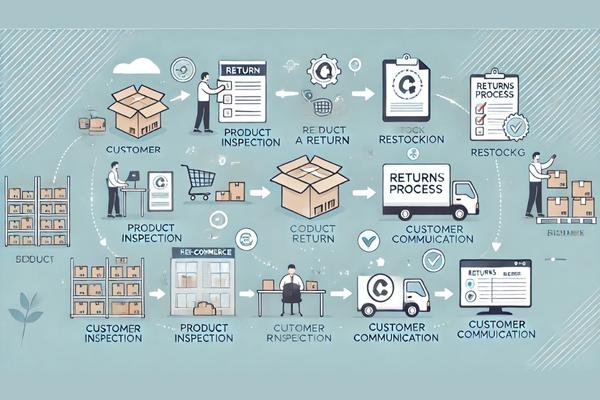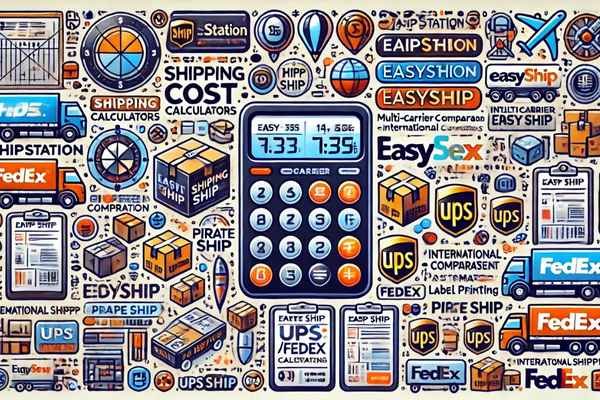
Best Alternative Payment Gateways for 2025
October 29, 2024
Best Tools to Automate and Streamline Shipping for Online Stores
October 29, 2024Payment Gateways Explained Essentials for Small Businesses
Payment gateways—a term that regularly comes up in the world of online commerce. For small businesses, understanding exactly how they work is essential. Payment gateways are the technology that enables secure handling of financial transactions online. They play a vital role in the purchasing experience, ensuring secure payments and building trust with customers.
In this guide, we’ll dive into how payment gateways work, explore the options available, walk you through setting one up, and discuss the essential features small businesses should look for in a payment gateway.
Table of Contents
1. What Is a Payment Gateway and Why Does It Matter?
A payment gateway is a technology that acts as the bridge between your online store and your customers’ payment methods, whether it’s a credit card, debit card, or digital wallet. Essentially, it authorizes transactions by encrypting customer information and securely transmitting it from your website to the payment processor for approval.
Why Payment Gateways Are Important for Small Businesses
For small businesses, using a payment gateway means being able to:
- Accept payments securely and efficiently.
- Build customer trust with data protection.
- Reach a wider audience by supporting various payment methods.
A reliable payment gateway increases conversion rates by providing a smooth, secure checkout process, which can encourage customers to complete their purchases.
2. How Do Payment Gateways Work? The Step-by-Step Process
To understand payment gateways, let’s break down the process into five clear steps that take place during an online transaction:
Step 1: Customer Checkout
The customer selects items, enters their payment information, and completes their order on your website. The payment gateway is then activated.
Step 2: Data Encryption
Once the customer enters their payment details, the gateway encrypts this sensitive information to prevent unauthorized access. The encrypted data is sent securely to the payment processor.
Step 3: Authorization Request
The payment processor forwards the transaction request to the customer’s bank or credit card network (e.g., Visa, Mastercard).
Step 4: Bank Approval or Decline
The customer’s bank verifies the availability of funds and approves or declines the transaction based on the balance and other security checks. The result is sent back to the payment gateway.
Step 5: Confirmation to the Customer
If approved, the gateway sends a confirmation to your website, notifying the customer that the payment has been processed. The funds are then transferred to your account, minus any applicable fees.
3. Types of Payment Gateways
When selecting a payment gateway, it’s important to know the main types:
Hosted Payment Gateways
With hosted gateways, the customer is redirected to a third-party page to complete the transaction. Popular hosted gateways include PayPal and Amazon Pay. These gateways handle all the security, making them ideal for businesses new to online payments.
Integrated Payment Gateways
Integrated gateways allow the customer to complete the payment directly on your website without redirection. They offer a seamless experience, but you’ll need to ensure PCI DSS (Payment Card Industry Data Security Standard) compliance.
Self-Hosted Gateways
Self-hosted gateways let you fully control the payment experience, including checkout design and transaction processing. Although more complex, they’re often used by larger businesses with dedicated development resources.
Affiliate Opportunity: Shopify Payments, an integrated gateway option, offers a seamless solution for small businesses.
4. Key Features to Look for in a Payment Gateway
Selecting the right payment gateway depends on several key features that will impact your business’s operations and customer experience.
Security Features
Security is non-negotiable. Look for gateways with SSL encryption, PCI DSS compliance, and tokenization features to protect sensitive information.
Compatibility with Shopping Carts and Plugins
A gateway that’s compatible with your website platform or e-commerce software (like WooCommerce or Shopify) is essential for a hassle-free setup. Many gateways offer plugins to easily integrate with popular CMS platforms.
Multi-Currency Support
For businesses serving international customers, choose a gateway that supports multiple currencies. It enhances customer experience and broadens your market reach.
Mobile Payment Options
Mobile-friendly payment gateways are increasingly important as more people shop on their smartphones. Look for options that support mobile wallets like Apple Pay and Google Pay.
Affiliate Opportunity: Kount and Verifi offer fraud prevention solutions that integrate with payment gateways, adding another layer of security.
5. Top Payment Gateways for Small Businesses in 2024
Here’s a look at some of the best payment gateways for small businesses, along with a breakdown of their features, costs, and ideal use cases.
1. PayPal
- Overview: Known globally, PayPal is a trusted, hosted gateway that offers ease of use and a wide customer reach.
- Fees: Transaction fees around 2.9% + $0.30 per transaction.
- Best For: Small businesses looking for a familiar, user-friendly option.
2. Stripe
- Overview: An integrated gateway known for its customization options and developer-friendly API.
- Fees: 2.9% + $0.30 per transaction.
- Best For: Businesses needing advanced customization.
3. Square
- Overview: Ideal for both online and in-person payments, Square provides tools for point-of-sale (POS) as well as e-commerce.
- Fees: 2.6% + $0.10 per transaction.
- Best For: Small businesses with physical locations or needing POS solutions.
4. Authorize.Net
- Overview: A robust gateway offering fraud detection, multiple currency support, and strong customer service.
- Fees: $25 monthly fee, plus transaction fees.
- Best For: Growing small businesses looking for a reliable, comprehensive solution.
Affiliate Opportunity: Link to affiliate programs for PayPal, Stripe, or Square to help readers sign up and explore each gateway.
6. Setting Up a Payment Gateway on Your Site
Setting up a payment gateway is typically straightforward, especially if you’re using a major platform like Shopify, WooCommerce, or BigCommerce. Here’s a simplified setup guide using PayPal and Stripe as examples:
- Create an Account: Go to the payment gateway’s website (e.g., PayPal or Stripe) and sign up for a business account.
- Verify Business Information: Provide your business details, bank account information, and any necessary documentation.
- Integrate with Your Website:
- For hosted gateways like PayPal, you can add a simple “Buy Now” button.
- For integrated options like Stripe, install the plugin on your CMS or add the code if using a custom site.
- Test the Setup: Conduct a test transaction to ensure everything is functioning properly before launching live transactions.
7. Ensuring Security with Your Payment Gateway
Security should be a top priority when processing online payments. Here are some best practices:
Tokenization
Tokenization replaces sensitive information with unique tokens that cannot be used outside of the payment context, adding a vital layer of security.
Compliance Standards
Payment gateways should comply with PCI DSS standards. These are industry guidelines for securely handling card transactions. Additionally, SSL certificates and two-factor authentication enhance customer data protection.
Fraud Detection
Many payment gateways now include fraud prevention tools, such as automated suspicious activity monitoring. Consider additional security services like Sucuri for extra protection against potential threats.
Affiliate Opportunity: Security software like Sucuri integrates well with payment gateways, providing additional defense against fraud.
8. Choosing the Right Payment Gateway for Your Small Business
The right payment gateway will depend on several factors specific to your business:
- Transaction Fees: Evaluate the fees per transaction, as these can add up for smaller businesses. Choose a gateway that aligns with your volume and budget.
- Integration Needs: Look for a gateway that works smoothly with your e-commerce platform or website.
- Customer Support: Some gateways offer 24/7 support, while others have limited availability. For small businesses, reliable support can be a critical factor.
Affiliate Opportunity: Some comparison tools or blog resources can help small businesses decide on a gateway that best fits their needs.
Payment Gateways Explained Essentials for Small Businesses Comparaison
Best Payment Gateways for Small Businesses
| Gateway | Key Features | Best For | Link |
|---|---|---|---|
| PayPal |
| Small businesses & freelancers | Visit PayPal |
| Stripe |
| Tech-savvy businesses & SaaS | Learn More |
| Square |
| Retailers & food businesses | Explore Square |
| Authorize.Net |
| Growing businesses | Discover Authorize.Net |
Frequently Asked Questions (FAQ)
1. What are the main benefits of using a payment gateway?
Using a payment gateway offers secure, efficient payment processing, builds customer trust, and supports business scalability.
2. How do payment gateways differ from payment processors?
A payment gateway authorizes online payments, while a payment processor handles the actual transfer of funds between banks.
3. Can small businesses afford secure payment gateways?
Yes, several affordable payment gateways cater to small businesses, providing robust security and competitive fees.
Conclusion
Selecting the right payment gateway is crucial for small businesses looking to offer secure and convenient online transactions. With the right choice, small businesses can improve their customer experience and potentially increase their sales. Consider exploring the top gateways discussed and take advantage of free trials to find the best fit.








